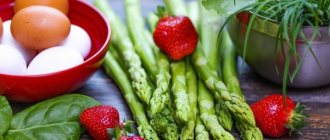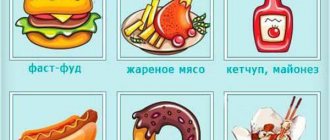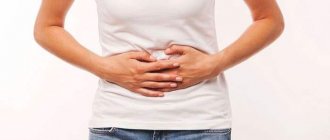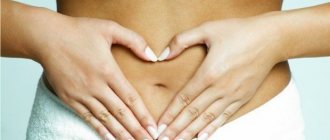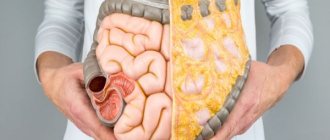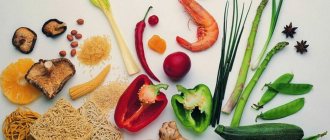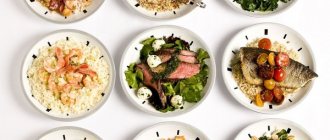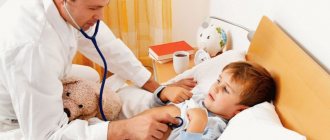Rotavirus is a common viral disease. Rotavirus infection debuts with symptoms of a respiratory inflammatory process, then dyspeptic disorders appear - abdominal pain with diarrhea, vomiting. The disease is seasonal; outbreaks occur during the cold season of the year. Young children and people with reduced immune defenses are susceptible to the disease.
The course of the disease is individual and different. In children, severe dehydration can lead to life-threatening conditions. Adults often suffer from the disease on their legs. Rotavirus can be carried by healthy people without clinical signs of disease. Antiviral therapy is nonspecific and includes drugs based on immunoglobulins. If E. coli manages to attach to a viral infection, treatment with antibiotics will be required. Your doctor will determine how many days you will need to take the medication.
There is no etiotropic treatment for the disease. The complex of therapeutic measures consists of pathogenetic steps and elimination of the symptoms of the disease. The body must recover from the illness. It is vitally important to eat properly during the acute period of the disease and during the recovery stage. It will speed up treatment for stomach flu and make it effective.
Purpose, purpose of gentle nutrition for rotavirus infection
Eating properly during rotavirus infection is a beneficial condition for recovery. Along with food, the body receives the necessary biologically active substances that help the body restore strength and normalize immune defense. In the acute period of the disease, the body is weakened - there is not enough strength and energy for a full digestive process. Therefore, during the course of the disease, food must enter the body in an easily digestible form.
A diet for rotavirus infection can be a medicine to eliminate symptoms. The astringent properties of the products will help fight diarrhea. Fruit compote and decoctions of medicinal plants will help restore normal water-salt balance.
Do not refuse to eat food during the acute period of the infectious process. Before preparing a dietary menu for a patient, find out the details of nutrition for rotavirus infection.
Medical nutrition
The first days of the disease are accompanied by intense vomiting and diarrhea. Symptoms lead to severe dehydration, loss of minerals and trace elements by the body. Each entry of food or water into the stomach can provoke attacks of vomiting.
- To avoid the development of vomiting and worsening the condition, reduce your daily diet, eat small meals, but more often. The number of meals during the day is at least 6-8.
- Choose cereal porridges boiled in water. Rice and semolina porridge are useful. They are characterized by an astringent effect and envelop the mucous membrane of the stomach and intestines. Another useful property of the products is the absence of fermentation processes in the intestines after consumption. Cook the porridge until semi-liquid, do not add salt, milk or butter.
- It is not recommended to consume vegetable oil or butter during the acute period. The first enhances intestinal motility and aggravates diarrhea. Due to enzymatic deficiency, which occurs due to damage to the intestinal epithelium, butter is poorly digested and absorbed by the body.
- On the third or fourth day, the diet for intestinal infections is expanded with other water-based porridges - oatmeal or corn. You can boil buckwheat.
- If the patient's condition improves, meat can be added to the diet. Proper nutrition for rotavirus infection should include lean boiled and steamed meats. Give the sick rabbit fillet, veal. It is healthy to eat chicken breast and turkey. It is better to cook steamed cutlets or meatballs from meat - this will improve digestion and absorption of healthy food components.
- The diet after rotavirus infection allows the consumption of low-fat fish.
- After the introduction of meat, the patient is allowed to eat eggs. It's better to cook a steam omelette. Remember the norm - 1-2 eggs per week.
- You can eat fruits and vegetables boiled or baked. Prepare vegetable puree in water without adding oil or salt. The patient is served potatoes, carrots, broccoli, and zucchini.
Drinks for rotavirus infection
On the first day after the onset of the disease, it is allowed to drink clean filtered water and electrolyte solutions - Regidron, Gastrolit. After the patient’s condition improves, begin to give him decoctions of rose hips and raspberries. You can drink jelly from sweet berries, compote from dried fruits. Weak black tea is allowed.
After 4-5 days of illness, you can gradually introduce kefir into the menu. Other fermented milk products are also useful - yogurt or acidophilus. These products normalize and restore microflora.
Follow the diet during the period of illness, for 2 weeks after the start of recovery. During this time, complete regeneration of the intestinal epithelium will occur, and the usual regime and diet will gradually return.
Prohibited Products
A diet for intestinal infections in children involves complete exclusion from the diet:
- Dishes made from fatty meats - chicken legs, wings, pork, lamb, duck, goose.
- Fatty fish.
- Milk, sour cream.
- Fresh vegetables, fruits. Apples are allowed baked on the 7-10th day of illness.
- Smoked, pickled products, pickles.
- Confectionery – chocolate, cakes, pastries.
- Brown bread, fresh white bread, pasta.
- Highly carbonated sweet drinks - Pepsi-Cola, Coca-Cola.
- Adult patients need to remember: alcohol is strictly contraindicated for rotavirus infection.
- It is not recommended to eat foods containing phosphoric acid as a stabilizer.
Eating foods from the list stimulates intestinal motility - leading to increased diarrhea. They cause increased fermentation and putrefaction processes in the intestines. Animal fats will not be able to be fully digested in the intestines due to the enzymatic deficiency that occurs during rotavirus infection.
Example menu
| Breakfast | Snack | Dinner | Snack | Dinner | |
| First day | Semolina porridge with water, a glass of unsweetened, weak tea. | Steamed cottage cheese soufflé (0%). | Low-fat chicken broth, steamed veal meatballs, currant jelly. | White loaf crackers and a glass of rosehip infusion. | Low-fat steamed fish and unsweetened tea. Before bed - low-fat kefir. |
| Second day | Oatmeal with water, tea without sugar. | Carrot-apple puree. | Beef broth, steamed chicken, chopped in a blender, blueberry decoction. | Cocoa in water with dry cookies. | Steamed fish cutlets, tea. Before bed - low-fat kefir. |
| The third day | Rice porridge with water, applesauce, unsweetened tea. | Berry decoction with white bread croutons. | Rice soup with meat broth, steamed chicken dumplings, blueberry jelly. | Apple peel decoction, dry cookies. | Steam pudding made from low-fat cottage cheese, cocoa and water. Before bed - low-fat kefir. |
Features of the diet during the recovery period
Following a diet and adhering to the principles of gentle nutrition is important in the acute period of an intestinal infection. After stopping the acute process, the body needs to restore structural elements and normalize physiological functions. If you carefully adhere to the rules of dietary nutrition and observe a gentle diet, recovery will occur much faster.
After the acute process is over, follow the diet for 2-3 weeks. Otherwise, the condition may worsen with the return of unpleasant symptoms.
If a patient at the recovery stage has a good appetite, it is strictly not recommended to overeat. The body has not restored enzymatic activity. Young immature intestinal epithelial cells, which begin to develop in place of the damaged ones, do not have time to produce a sufficient amount of enzymes. It is important to eat small portions, but often. Food should have a comfortable temperature, not too hot or cold. The rule concerns the intake of liquids. Give your baby something to drink every 30 minutes. Give up to 50-70 ml of liquid at a time. If the patient eats too much food or drinks too much liquid, prepare to vomit.
You should not force a child to eat if there is no appetite. It is imperative to drink liquid. If your child categorically refuses to drink or develops signs of obvious dehydration, seek medical help immediately. The doctor will have to resort to parenteral drip infusions of saline solutions.
Dishes prepared for a patient after rotavirus should be boiled or steamed. Eating fried and smoked foods is unacceptable. Beer and alcoholic beverages are strictly contraindicated for adult patients.
Diet after stomach flu
The diet must be followed even after the symptoms of rotavirus infection have disappeared. This is especially important during the first two weeks. There is no need to force the patient to eat if he does not want to. Food portions should be small.
Gradually, you can add previously excluded products to the menu, but you need to listen to your body; if no negative reactions occur, then continue to expand your daily diet.
Some useful tips:
- Before choosing any porridge, you should pay attention to the nature of the stool. If it is liquid, then it is better to cook the rice. If diarrhea has passed, you can add buckwheat. For constipation, you should give preference to porridges made from corn or oatmeal.
- It is better to give the patient minced lean meat. It can be chicken breast, beef, veal, turkey, but in no case pork.
- Natural cottage cheese is allowed from fermented milk products. If the patient does not have a negative reaction, then after a week you can add low-fat kefir.
- The only fruits you can eat for the first few weeks are bananas and apples. The latter are best consumed baked.
- For sweets - a little vanilla marshmallow or marshmallow.
- It is recommended to puree vegetables.
- Eggs can only be served as a steam omelet and no more than twice a week.
- Pasta is allowed only after stool normalization.
- Any sausages, chocolate, legumes, or cakes with cream are completely excluded.
- To restore fluid balance, the patient must drink large amounts of fluid. Regular still water, weak black or green tea, and dried apricot compotes work well. You need to drink often, but in small portions.
- To compensate for the deficiency of important microelements, as well as restore the salt balance, it is recommended to drink mineral water, for example, Borjomi.
To restore the salt balance, you can prepare a healthy and tasty drink from raisins. To do this, add 100 g of raisins to 1 liter of water, boil for about an hour, strain and cool. Strained raisins should not be thrown away; they also need to be mashed well and added to the broth. Put 4 tsp there. granulated sugar, 1 tsp. salt and 0.5 tsp. soda
Intestinal flu is an infectious disease that manifests itself with a number of unpleasant symptoms. To avoid dehydration and restore the functioning of the gastrointestinal tract, it is necessary to adhere to dietary nutrition.
Rate this article: Share with friends! Source: lechenie-simptomy.ru
Features of diet in children
Gentle nutrition for rotavirus infection in children requires an individual approach, depending on the age of the child and his condition. A prerequisite for any age is a dairy-free diet in the first days after the onset of the disease. If the child is breastfed, additional difficulties arise. Rotavirus kills intestinal epithelial cells and suppresses the production of lactose, the enzyme responsible for the breakdown of milk sugar. The diet after rotavirus infection in children requires excluding milk in the first days.
The child will have to be switched to lactose-free formulas for the period of illness and recovery. It is recommended to introduce lactose-free soy-based mixtures into the diet. A dairy-free diet is accompanied by drinking compotes and decoctions of medicinal herbs. The lactose-free mixture Lactazar is diluted with water.
If the baby refuses food
Often a child who has recovered from a viral infection refuses to eat food. This also occurs in the acute period of the disease. The child feels unwell and refuses to eat.
Do not panic. If a child does not want to eat, do not force him. If you try to feed your child against his will, you will provoke vomiting and the condition will worsen. Be sure to give him something to drink. Offer a decoction of rose hips and raisins. In the subacute stage, add a couple of teaspoons of honey to the drink instead of sugar.
From the third day of illness, in case of intestinal infection, porridge without milk, vegetable dishes in the form of puree, and semi-liquid are allowed. Food should be gentle and easy to digest. You can gradually introduce the following dishes into your child’s diet:
- Lean meats - chicken, turkey, rabbit.
- Low-fat boiled fish.
- Liquid porridge on water. Boil buckwheat and oatmeal. In the first days, it is better to feed the child rice and semolina liquid porridge.
- Steam vegetables for the child.
- On days 3-4, include a banana in your child’s menu. You should not give the patient fresh apples or tangerines.
Rotavirus rarely leaves serious complications. The diet after rotavirus is strictly and strictly followed - it will speed up the recovery process in children and adults.
What should be completely excluded?
When creating a menu for rotavirus in children 4 years of age and older, it is necessary to take into account that a number of products complicate treatment, so they must be excluded from the diet.
These include:
- sugar and confectionery;
- cow's milk;
- carbohydrate-rich foods.
These products “feed” the infectious disease and cause its next attacks.
A negative reaction from the digestive system also occurs when consuming:
- rich soups, broths with a lot of fat;
- pasta of any kind;
- fatty meat, semi-finished products, sausages and frankfurters;
- thermally unprocessed vegetables and fruits;
- cocoa, sweets, chocolate;
- rich pastries, fresh rye bread;
- canned, smoked and pickled fish, dishes from its fatty varieties;
- porridge from pearl barley or barley, millet.
Some vegetables contain high amounts of fiber, which can irritate the intestines. It will worsen the symptoms of the disease and cause another attack of diarrhea or vomiting. To prevent this from happening, temporarily exclude cruciferous vegetables (cauliflower and white cabbage, radishes), cucumbers, onions and garlic from your diet.
All food for rotavirus infection should be served warm: cold foods will irritate the stomach. Portions should be small; do not try to feed the child until full; instead, give food up to 6-8 times a day. It is important to follow the correct drinking regime, which will help protect the baby from dehydration.
Some recipes for rotavirus infections
Below are recipes for dishes to prepare for a rotavirus patient at home.
Preparing rice water
The decoction has a strengthening, enveloping effect and will reduce diarrhea. To prepare the drink you will need 4 full tablespoons of rice cereal. Fill them with a liter of water and boil over low heat. Cooking time is from 2 hours. Make sure the rice is boiled.
The mixture is removed from the heat and pureed until smooth. The resulting liquid should be cooled, add half a teaspoon of salt and soda to it on the tip of a knife. Place the finished cooled mixture in the refrigerator for storage. If you need to give the patient something to drink, a couple of spoons of the mixture can be slightly warmed up.
Apple and carrot puree
Giving fresh vegetables and fruits to a patient with rotavirus infection is strictly contraindicated. A healthy and tasty alternative to fresh vegetables is carrot puree with apples. Children eat the dish with pleasure even if they have no appetite. Most parents leave positive reviews about it. Television pediatrician Komarovsky recommends this dish in the subacute period for feeding a child. Remember: you can eat purees in small portions.
Apples and carrots are taken in equal proportions, washed and peeled. Grate the products on a fine grater, add 5 tablespoons of sugar per 1 kg of vegetable mixture. You can use natural honey instead of sugar. Bring the resulting mixture to a boil. Once ready, the puree is poured into small glass jars and stored in the refrigerator so that it does not go to waste.
Recipes
Dishes suitable for a diet after rotavirus are easy to prepare. You can dilute the menu with the following recipes.
Meat soufflé in a slow cooker
| Ingredients | |
| Meat (chicken breast) | 100 g |
| Chicken egg | 1 PC. |
| Salt | taste |
| Sour cream | 2 tbsp. l. |
| Butter (used for greasing molds) | 10-15 g |
The cooking process includes the following steps:
- chop the meat, remove the film and veins;
- grind it in a blender bowl, adding salt, sour cream and egg yolk (you need to get a homogeneous mass);
- Separately beat the whites into a foam;
- introduce the fluffy white mass into the minced meat (carefully so as not to damage the airy structure);
- grease the molds with butter;
- spread the minced meat over them;
- Place a steam cooking rack in the multicooker, pour 1 liter of water into the bowl;
- cook with the lid closed for 40-50 minutes;
- After the multicooker gives a signal, you don’t need to open the lid for another 10 minutes; leave the dish to ripen in the “warm” mode (otherwise the soufflé will settle).
Steamed fish cutlets
| Ingredients | |
| Fish fillet (white varieties) | 300 g |
| Potato | 3 pcs. |
| Carrot | 1 PC. |
| Chicken egg | 1 PC. |
| Salt | taste |
Cooking process:
- Place all the ingredients in a blender bowl (if necessary, cut the fish fillets into pieces);
- add salt to taste;
- beat everything to a homogeneous texture;
- Form cutlets from the resulting minced meat;
- roll them in a small amount of breadcrumbs;
- place the pieces on the steamer rack;
- leave for 20 minutes.
The finished cutlets are poured with a small amount of melted butter. The dish can be served warm or chilled with any vegetable puree.
Vegetable broth (option for diet after rotavirus)
| Ingredients | |
| Water | 1 l |
| Carrot | 1 PC. |
| Bell pepper | 1 PC. |
| Potato | 1 PC. |
| Dill | 3 branches |
| Bay leaf | 1 PC. |
| Salt | taste |
Preparation of broth:
- Peel and seed the vegetables, cut into large cubes;
- pour water over the workpiece and set to cook;
- reduce heat after boiling, skim off foam;
- after 10 minutes, add bay leaf and salt;
- As soon as the carrots and potatoes soften, turn off the heat.
The strained liquid is used as broth. Before serving, it is enriched with finely chopped dill. Boiled vegetables are used to make puree, which is ideal for the diet table as a side dish.
If you find an error, please select a piece of text and press Ctrl+Enter.
Diet for older children and adult patients
- Anokhin V.A. Rotavirus infection in children: modern aspects of diagnosis and treatment / V.A. Anokhin, S.V. Khaliullina, O.I.Bikkinina, K.V. Sushnikov // Kazan State Medical University. Republican Infectious Diseases Clinical Hospital of the Ministry of Health of the Republic of Tajikistan
- Asilova M.U. Etiological structure of viral diarrhea in children // Journal of Infectology. - T.2. – 2010. – No. 3. – P. 47.
- Bogonosova N.N. Abdominal pain syndrome in children with rotavirus infection / N.N. Bogonosova, I.A. Barishchuk, V.T. Kiklevich // Journal of Infectology. - T.2. – 2010. – No. 3. – P.56.
- Vasyunin A.V. Efficacy of efferent therapy for intestinal infection of rotavirus etiology in young children / A.V. Vasyunin, E.I. Krasnova, E.N. Kibireva // Journal of Infectology. - T.2. – 2010. – No. 3. – P. 62.
- Denisyuk N.B. Microecological intestinal disorders in children with rotavirus infection // Journal of Infectology. - T.2. – 2010. – No. 3. – P.74-75.
- Denisyuk N.B. Rotavirus infection in children: a differentiated approach to therapeutic nutrition // Journal of Infectology. - T.2. – 2010. – No. 3. – pp. 73-74.
- Dzyublik I.V. et al. Rotavirus infection: educational and methodological manual for doctors. - Kyiv: Olprint, 2004. - 116 p.
- Zhidkov E.G. Clinical and pathogenetic features of the course of rotavirus infection in children at the present stage: abstract. dis. . Ph.D. honey. Sci. -Khabarovsk, 2008. – 23 p.
- Intestinal infections / Ed. S.G. Paka, V.A. Malkova // Sat. academic-met. benefits for medical universities. – M., 2006.-168p.
- Konovalov O.E. Medical and social aspects of the prevalence and prevention of intestinal infections in the adult population / O.E. Konovalov, D.I. Kicha, T.A. Safronova, M.A. Sychev // Bulletin of MSI, 2008.-№3.-pp.39-41.
- Rumyantsev A.G. Prevention and control of infectious diseases in primary health care: a guide for doctors / A.G. Rumyantsev. -M.: Medpraktika-M, 2007. - Part 1. - 528s.
- Rumyantsev A.G. Prevention and control of infectious diseases in primary health care: a guide for doctors / A.G. Rumyantsev. -M.: Medpraktika-M, 2007. - Part 2. - 296 p.
- Safronova T.A. Medical, social and organizational aspects of improving medical care for patients with intestinal infections: Dis...... Cand. honey. Sciences / T.A. Safronova. – Ryazan, 2007. – 152 pages.
- Yushchuk N.D. Basic principles of diagnosis, treatment and prevention of acute intestinal infections / N.D. Yushchuk, Ya.M. Eremushkina // Medical assistance, 2005. - N1. — P.16-19.
- Yushchuk N.D., Rotavirus gastroenteritis (clinic, diagnosis, treatment) / N.D. Yushchuk, V.P. Mashilov // Lectures. - M., 1990. - 19 p.
Other articles by the author
so it came in handy for us((((((
Jenny Thank you, the article was very useful. We are just treating this nasty thing.
More on the topic:
- What is the name of the blood test for HIV hepatitis HOSPITAL COMPLEX Attention! When taking the AT and AG test for HIV 1/2 for medical examination in accordance with the legislation of the Russian Federation, it is mandatory to provide the following data and documents: 1. For residents of Moscow and […]
- The main signs of HIV in men Symptoms of HIV in men, what to look for HIV infection is caused by the human immunodeficiency virus. Not everyone infected will automatically contract AIDS (acquired immunodeficiency syndrome), but after several years the pathogen […]
- OSB of the Smolensk district of the Altai region Department of bailiffs of the Smolensk, Bystroistok districts and the city of Belokurikha Contact information for this department of the FSSP: Senior bailiff: Shvetsov Evgeniy Anatolyevich Service areas: Smolensky, Bystroistok and […]
- HIV infection and opportunistic diseases HIV infection and opportunistic diseases Redirection is made from the website of the All-Russian campaign for testing for HIV infection Authorization Password recovery Home Lifestyle […]
- HIV positive how to understand HIV positive how to understand Redirection is made from the website of the All-Russian campaign for testing for HIV infection Authorization Password recovery Home Psychological support Analysis on […]
- Syrup for colds for children from one year of age Syrup for flu and colds for children In a child, immunity is finally formed only by the age of 16. Thus, children are more susceptible to the effects of pneumotropic viruses and easily catch ARVI. Children are reluctant to swallow [...]
Permitted and prohibited products
If the first signs of intestinal flu appear, the patient should avoid the following foods:
- pastries from butter dough, chocolate, sugar, condensed milk;
- fried, salty and spicy foods;
- dairy and fermented milk products, including cheese;
- fresh fruits and vegetables;
- watermelon;
- fatty meats and fish (pork, sturgeon, salmon, trout, herring, etc.);
- soups with meat or fish broth;
- sausages, smoked meats and semi-finished products;
- alcohol, strong tea and coffee, carbonated drinks;
- barley, pearl barley porridge.
What should you exclude from your diet - gallery
Fresh cucumbers Fresh cabbage Smoked meats Seafood Sweets Bakery products Fatty dishes Sauces and mayonnaise Citrus fruits
In this case, the diet may contain:
- dried wheat bread;
- soup with vegetable broth, vegetable puree soup;
- lean meat and fish (chicken, turkey, cod, pike perch, pike, pollock, etc.);
- rice, semolina, buckwheat porridge;
- steamed vegetables (carrots, cauliflower, beets and others);
- baked fruits, including apples, bananas;
- mashed potatoes;
- jelly, green tea, diluted juices, rosehip decoctions.
What can you eat - gallery
Baked apples Rose hip tea Green tea Vegetable puree soup Boiled chicken Lenten soup Boiled vegetables Rusks
